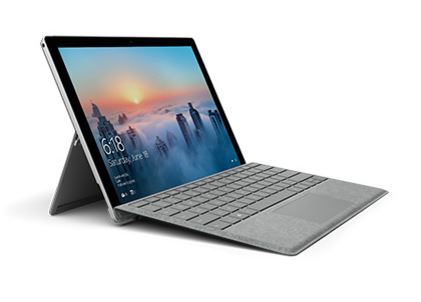Microsoft: Surface revenues lower than expected in its latest quarter

Microsoft's third quarter fiscal 2017 Surface performance came in lower than company officials had been expecting.

Surface revenue decreased $285 million or 26 percent, compared to the year-ago quarter, primarily due to a reduction in volumes sold, according to Microsoft's 10-Q for the quarter. Surface revenues this quarter were $831 million, down from $1.3 billion in the same quarter a year ago.
That decline is not simply because Microsoft didn't launch any new Surface tablets or laptops in that quarter (which ran from January 2017 to March 2017). Officials already were well aware that the successor to the Surface Pro 4 wasn't coming then, nor was the Surface Book 2.
Microsoft may launch an Intel Kaby Lake-based Surface Pro 5, a successor to its Surface Pro 4 tablet, some time relatively soon (though not on May 2), according to sources. There's also been some speculation that Microsoft may introduce soon another new Surface device running its Windows 10 Cloud release -- a possible successor to its now-discontinued Surface 3 tablet -- aimed at the education market on May 2.
Microsoft did begin selling in earnest the Surface Studio, Microsoft's first all-in-one PC launched in the Fall of 2016, and the updated Surface Book with Performance Base. But neither of those niche products was expected to be a huge seller.
See also: Windows 10: The big changes headed your way in 2017 (TechRepublic)
The quarter was one that marked an end to the current Surface product lifecycle and increased product competition, said CEO Satya Nadella, during a call with financial analysts on April 27.
Competition from Microsoft's own OEMs negatively affected Surface's performance this fiscal quarter, said Chris Suh, general manager of investor relations at Microsoft.
"Surface came in lower than we guided," Suh said. Microsoft used to be "the only player in (Windows) 2-in-1s," but now there's greater price competition from our OEM channel."
Surface is a relatively small contributor to the company's overall profits, so that's not a big problem for Microsoft, Suh said. And Microsoft is encouraging its PC-maker partners to emulate Surface designs. Microsoft's reason for building its own Surface hardware is to try to expand the overall PC category for all players, especially its OEMs.
Microsoft continued to wind down its Windows Phone sales, as planned, in its fiscal 2017 Q3. "We effectively have no revenue left" in the phone segment, Suh said. By the end of its fourth quarter, Microsoft will have basically exited the consumer phone handset business, according to its 10-Q.
Windows OEM revenues, Xbox Live subscribers, and Bing search/advertising revenue were all up this quarter.
Microsoft, as it has done in the past few years, highlighted what's happening on the cloud side of its business during its Q3 earnings report.
Microsoft continues to decline to separate out Azure cloud revenues from its overall commercial-cloud number. But that commercial cloud annual run rate is currently at $15.2 billion, well on the way to the $18 billion by mid-2018 goal Microsoft set for itself.
Microsoft official said as of this quarter there are now more than 100 million seats of Office 365 commercial (business) in market, up from 96 million Office 365 Commercial seats in Q2 FY17. Office 365 consumer seats in Q3 FY17 hit 26.2 million, up from 24.9 million in Q2 FY17.
Dynamics on-premises and cloud revenues were up 10 percent compared to the year-ago quarter. The Dynamics 365 CRM and ERP cloud services are still a relatively small part of this more than $2 billion annual business for the company, but that percentage is growing, said Suh.
Microsoft shifts gear in the data world: